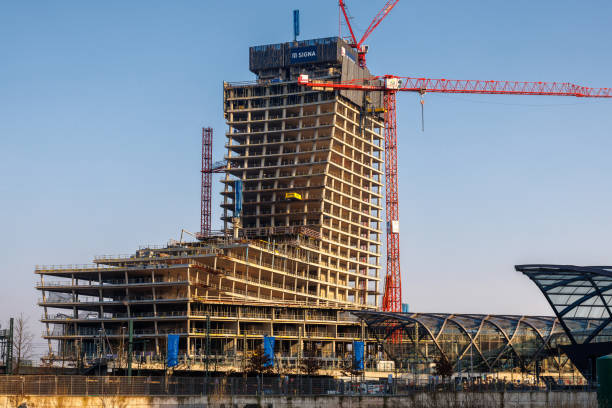Commercial Real Estate Crisis in Los Angeles: Risks, Defaults, and Opportunities for Developers
The commercial real estate (CRE) market in Los Angeles is facing historic pressure in 2025. Once known for thriving office towers and bustling retail corridors, the city is now dealing with defaults, falling values, and a stricter financing environment.
Table of Contents
ToggleBut within this crisis lies a potential opening. For investors and developers who understand the market and plan strategically, today’s downturn may become tomorrow’s growth opportunity.
The Scope of the Crisis
Los Angeles is not alone. Cities nationwide are grappling with CRE challenges. But LA shows some of the sharpest changes. Several factors drive the downturn: remote work, higher interest rates, and tighter lending standards.
Vacancy Rates: Downtown LA office vacancies hit nearly 30% in Q2 2025, the highest in decades, according to CBRE.
Falling Values: Office towers are trading at discounts of 30–50% from pre-2020 levels.
Default Risk: Moody’s Analytics warns that one in five U.S. office loans may default. Los Angeles is among the most exposed markets.
These shifts are structural, not temporary. The dense office model of the past is unlikely to return.
L.A. Commercial Real Estate: Crisis, Risks & Developer Opportunities
A snapshot of defaults, vacancies, and where strategic developers can step in.
Office Loan Defaults Rising
SASB bond defaults soared to ~8.7% in 2024—warning signs for financial stability. :contentReference[oaicite:0]{index=0}
Vacancies & Distressed Assets
Up to 20% of U.S. office space is vacant. Many buildings face foreclosures or fire-sale valuations. :contentReference[oaicite:1]{index=1}
Repurposing Opportunity
Investors and developers are eyeing office-to-residential conversions and adaptive reuse strategies. :contentReference[oaicite:2]{index=2}
Funding for Strong Projects
Banks are still lending—but favor well-structured, high-potential developments with solid underwriting. :contentReference[oaicite:3]{index=3}
Why Los Angeles Feels the Pain
Several factors make the LA market more vulnerable than others.

1. Downtown Office Dependency
LA’s central business district relied heavily on law firms, entertainment studios, and financial companies. Remote work hit these tenants hard.
2. High Leverage
Many office buildings were refinanced between 2016 and 2019, when rates were low. As loans mature, owners now face rates nearly double their previous levels.
3. Weak Retail Ties
Downtown retail depended on office traffic. With workers staying home, foot traffic is down more than 40% from 2019.
4. Local Government Strain
Commercial property taxes support city revenue. With assessed values falling, LA may lose hundreds of millions annually by 2026. This adds pressure to public services.
Ripple Effects for Stakeholders
The CRE downturn affects far more than landlords.
Lenders: Banks demand up to 40–50% equity before financing projects.
Developers: Rising construction costs and cautious lenders halt many new office builds.
Investors: Institutions have pulled back, while private equity waits for deeper discounts.
Tenants: Companies secure favorable terms — free rent, allowances, and flexible leases.
The old formula — steady demand, rising rents, cheap credit — no longer applies.
Where the Opportunities Lie
Despite the struggles, downturns often open doors for those ready to act.
1. Adaptive Reuse and Conversions
Converting outdated offices into housing is gaining traction.
Potential Scale: A UCLA study found that 25% of LA’s vacant office stock could be suitable for conversion.
Investor Edge: Distressed assets bought at discounts can be repurposed, with housing incentives making deals more viable.
2. Growth in Niche Asset Classes
While offices weaken, other sectors thrive.
Industrial and Logistics: Vacancy rates remain under 4%, fueled by e-commerce.
Medical and Life Sciences: Demand is strong near UCLA, USC, and biotech hubs.
Student Housing: Enrollment demand keeps cap rates below 5% around USC and UCLA.
3. Public-Private Partnerships
Shrinking city budgets open doors for collaboration. Developers who work with municipalities can repurpose underused assets into housing, community centers, or mixed-use spaces.
4. Strategic Acquisitions
Distressed properties are hitting the market. Investors with capital may buy prime assets for 40–60 cents on the dollar, especially in Downtown LA.
The Financing Landscape
Financing is more expensive, but capital is available for those who structure deals carefully.
Debt Markets: Banks remain cautious, but private debt funds are active, charging 8–10% for transitional loans.
Equity Investors: Family offices and high-net-worth groups are filling gaps, seeking higher returns.
Government Incentives: Affordable housing programs and retrofit incentives reduce costs for conversions.
JDJ Consulting helps clients navigate these channels, balancing banks, private funds, and incentives.
Risks Developers Must Consider
Before seizing opportunities, risks must be acknowledged.
Regulatory Hurdles: Conversions face complex zoning and entitlement requirements.
Construction Costs: LA remains one of the most expensive cities to build in.
Market Timing: Buying too early could mean catching falling prices.
Community Pushback: Projects near residential areas may face strong resistance.
Feasibility studies, entitlement expertise, and detailed financial modeling are essential to reduce these risks.
How JDJ Consulting Supports Clients
At JDJ Consulting, we help clients move through this uncertain market with confidence. Our services are built for today’s challenges:
Market Feasibility Studies: Determine the highest and best use of assets.
Entitlement and Zoning Guidance: Navigate LA’s difficult permitting environment.
Financial Analysis: Evaluate risks and returns on distressed acquisitions.
Strategic Advisory: Guide clients on adaptive reuse, public-private partnerships, and redevelopment.
By combining market knowledge with regulatory expertise, we help clients not only survive but thrive during the downturn.
Looking Ahead: A Market in Transition
Los Angeles’s CRE market will look very different in five years. Some office towers may remain vacant, while others will be reborn as housing, labs, or mixed-use hubs.
Industrial and specialized real estate will continue to grow. Developers who adapt early will position themselves for long-term success.
This is not the end of CRE in Los Angeles. It is a transformation. Those prepared to act strategically can help shape the city’s future.
Final Thoughts
Los Angeles’s CRE crisis is real. Defaults are rising, property values are falling, and financing is more difficult than ever.
But these disruptions create opportunity. Adaptive reuse, niche asset growth, and strategic acquisitions are all paths forward. Developers and investors who take the long view will benefit.
At JDJ Consulting Group, we see this moment not just as a downturn, but as a turning point. With the right approach, today’s challenges can lay the foundation for LA’s next growth cycle.
Error: Contact form not found.






